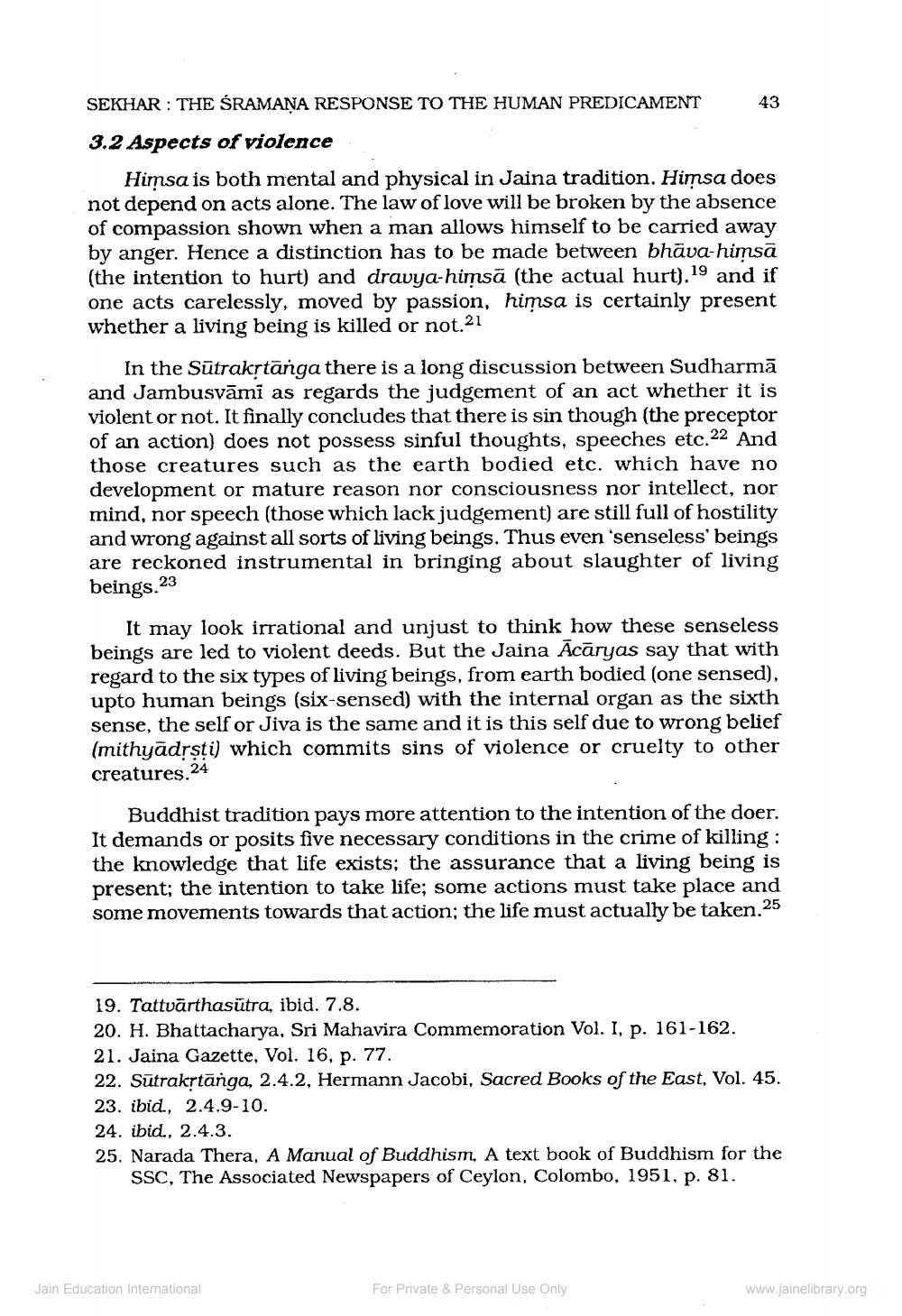________________
SEKHAR : THE ŚRAMANA RESPONSE TO THE HUMAN PREDICAMENT
43
3.2 Aspects of violence
Himsa is both mental and physical in Jaina tradition. Himsa does not depend on acts alone. The law of love will be broken by the absence of compassion shown when a man allows himself to be carried away by anger. Hence a distinction has to be made between bhāva-himsā (the intention to hurt) and dravya-himsä (the actual hurt). 19 and if one acts carelessly, moved by passion, himsa is certainly present whether a living being is killed or not.21
In the Sūtrakstānga there is a long discussion between Sudharmā and Jambusvāmi as regards the judgement of an act whether it is violent or not. It finally concludes that there is sin though the preceptor of an action) does not possess sinful thoughts, speeches etc.22 And those creatures such as the earth bodied etc. which have no development or mature reason nor consciousness nor intellect, nor mind, nor speech (those which lack judgement) are still full of hostility and wrong against all sorts of living beings. Thus even 'senseless' beings are reckoned instrumental in bringing about slaughter of living beings.23
It may look irrational and unjust to think how these senseless beings are led to violent deeds. But the Jaina Ācāryas say that with regard to the six types of living beings, from earth bodied (one sensed), upto human beings (six-sensed) with the internal organ as the sixth sense, the self or Jiva is the same and it is this self due to wrong belief (mithyādssti) which commits sins of violence or cruelty to other creatures.24
Buddhist tradition pays more attention to the intention of the doer. It demands or posits five necessary conditions in the crime of killing: the knowledge that life exists; the assurance that a living being is present; the intention to take life; some actions must take place and some movements towards that action; the life must actually be taken. 25
19. Tattvārthasütra, ibid. 7.8. 20. H. Bhattacharya, Sri Mahavira Commemoration Vol. I, p. 161-162. 21. Jaina Gazette, Vol. 16, p. 77. 22. Sūtrakstānga, 2.4.2, Hermann Jacobi, Sacred Books of the East, Vol. 45. 23. ibid., 2.4.9-10. 24. ibid., 2.4.3. 25. Narada Thera, A Manual of Buddhism. A text book of Buddhism for the
SSC, The Associated Newspapers of Ceylon, Colombo, 1951, p. 81.
Jain Education International
For Private & Personal Use Only
www.jainelibrary.org




